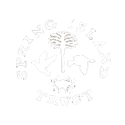Living with Wildlife
Coyotes are a species of small to medium sized canines that were originally found in the southwest and great plains regions of the North American continent. Approximately 400 years ago, upon the arrival of Spanish Europeans in those regions, the species began to expand its range due to several influencing factors. Europeans began applying intense pressure on wild predators viewing them as vermin or nuisances to livestock. These efforts were very successful in removing wolves, mountain lions, and bears from vast areas of the continent, but spurred coyote populations upward. This was in part due to the absence of larger competing carnivores, but also because of the greater social flexibility of coyotes and their ability to increase litter sizes in response to pressure on the population.
As European-style human settlement spread, it created further incentive for coyotes to move across the continent since coyotes adapted quickly, thriving on the fringes of settlements, villages, towns and cities. Coyotes first began making their way into the Southeastern region of the United States in the late 1950’s and had become a common site in South Carolina by the 1990’s. They are now firmly established in every part of the state including the sea islands of Beaufort and Jasper Counties.
Coyotes are occupying a role in the ecosystem here in South Carolina and on Spring Island that puts them in competition with bobcats and foxes that are native to the ecosystem. In some cases, they exist in the role of a larger predator on the landscape in the absence of species like the red wolf and the mountain lion that were extirpated from the area centuries ago. Coyotes do not fill these roles perfectly though, and can upset the ecosystem as well as come into conflict with humans. Because of this it is important to manage the coyotes on Spring island to keep their numbers low and the animals that remain, fearful of people. Trail cameras are used to keep a rough idea of where and how many coyotes are on Spring Island throughout the year. Then in the winter and late spring trapping is usually done to break-up pairs of animals to try and avoid litters of pups. This is because coyotes raising pups become more active during the day and defensive of the den site, and later when pups leave the den they may cause problems with people because they have not yet learned to avoid humans.
Keeping dogs both large and small on leash in the nature preserves minimizes the potential for any negative interactions with a coyote. At home, you should make sure that dog food, birdseed, and household trash is not left where it might attract coyotes. Doing these things helps keep the coyotes that come to Spring Island from learning behaviors that cause them to come into closer contact with people.
It is rare and unlikely, but if you hear or see a coyote during the daytime, you should wave your arms and make plenty of noise. Coyotes see humans as much larger and threatening and reinforcing that view by waving your arms, stomping your feet, and yelling loudly helps keep coyotes conditioned to stay as far away from people, pets and houses as they can.

Copyright © Spring Island Trust
40 Mobley Oaks Ln. · Okatie, SC 29909 · 843-987-7008
Site by Sans Sheriff Studio
